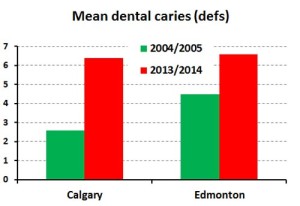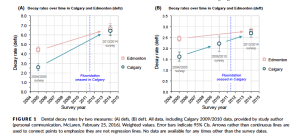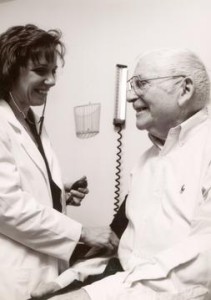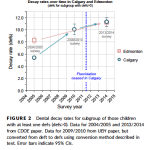Paul Theriault
Hi everyone. As you know, the Covid -19 virus is currently causing a great deal of concern in the world. Some cases have occurred in Alberta, but the current risk, as of the date of this writing (Thursday the 12th of March), is low according to AHS.
Alberta Health Services is now posting daily updates on Covid-19, as well as their current up to date measures. You can find this information by clicking here.
As such, Paul has implemented some new policies in his clinic to deal with this infection. While I normally treat many kinds of acute infections in my office, for the time being I am requesting my beloved patients to stay home if they are acutely ill. We can still have our visits, but they will be conducted over the telephone at the scheduled time, rather than in person. Any needed remedies can be shipped out via mail.
If Paul himself becomes ill, he or the staff will email you, and we will conduct our visit at the scheduled time via telephone as well.
I know the patients who receive therapies such as cranial work, acupuncture and hydrotherapy will not be as well served by a purely oral discussion, but we should be able to maintain our progress in this way without too severe a disruption.
If you are experiencing any acute illness, email us immediately at drpaultheriault.nd@gmail.com, and call health link at 8-1-1. Health link will assess you, and determine if there is a need for Covid-19 virus testing. Please do remember that there are many infections circulating around Calgary at this time, and becoming ill does not automatically mean you have this particular infection.
I would encourage my patients (and all people in general) to consult with the AHS website on Covid, and follow the instructions given to avoid transmission, including self isolation, if needed. Again, that website can be found my clicking here.
I will be monitoring developments and altering our appointments as needed as this situation develops. I will update you all via this blog, my facebook page and individually if this becomes necessary.
I thank you all for your understanding of this shift during this stressful time.
I am here for you all at any point you need a chat. I will be extending my hours somewhat to expand phone consultations if anyone if feeling stressed or anxious. Please do reach out to me.
Much love to you all in this time.
Hello everyone. Recently I found an old article I wrote on Naturopathic care of HIV. It was an old article and indluded a few phrases I would not now use. I deleted the post (on another website), and edited the original. This is the final version I wish to stand in the public record.
HIV is a contagious disease affecting many Albertans. Since its discovery in the 1980’s HIV and its associated condition AIDS have affected many individuals. With the advent of Antiretroviral therapy, HIV went from a frequently lethal infection to a manageable condition. Now most people with HIV live healthy and long lives. However, considerable gaps in HIV treatment occur. Naturopathic medicine is capable of covering many of these gaps, and improving the quality of life of those living with HIV.
HIV is a virus that is transmitted through sexual contact, tainted blood products, and sharing needles and medical instruments. HIV in Alberta was present in 0.0057% of the population in 2011 with higher rates among both First Nations and Gay men, and higher rates in Calgary and Edmonton compared with rural areas.
HIV as a virus attacks the immune system, specifically the T helper cells, which are responsible for activating the other branches of immune system, such as antibody production and cell specific immunity. The HIV virus attaches to the CD4 molecule on helper T-cells and infects them through that molecule. Because HIV affects T helper cells so profoundly, usually a count of the number of cells with CD4 molecules is taken as a measure of the immune system’s health in an individual with HIV. Normally a CD4 count is between 500-1200 cells per microliter. When CD4 counts drop below a certain level (usually 200 cells per microliter) they are at high risk for acquiring AIDS defining illnesses. HIV infection is also measure by the amount of virus present in a person’s blood. This is termed “viral load” and is a measure of the success of an individual’s immune system controlling the virus.
AIDS stands for “Acquired Immunodeficiency Syndrome”. It is a state where a person immune system cannot fend off infections any longer, due to their immune system being destroyed by the HIV virus. It usually occurs in people with CD4 counts below 200. Often individuals with AIDS have a number of diseases that are seen very rarely in healthy individuals, such as Pneumocyctis jirovicii Pneumonia (a pneumonia caused by a normally healthy fungus) and Kaposi’s Sarcoma (a very rare skin cancer). Some individuals move from HIV infection to AIDS very quickly, for reasons that remain mysterious in conventional medicine.
Conventional treatment for HIV involves the use of substances called Antiretroviral drugs. These drugs prevent the replication of the HIV virus which allows for the helper T-cells to replicate and resume stimulating and regulating the immune system. Many individuals on medication display levels of HIV in their blood so low as to be completely undetectable by lab studies. Some have received bone marrow transplants from people immune to HIV and have developed extremely low levels of the virus present in their bodies, and have been touted publicly as cures, but such a treatment is unlikely to become widespread due to its cost and the negative side effects of bone marrow transplants, such as graft versus host disease.
The prevention of HIV infection is best done by avoiding unsafe sexual practices such as unprotected sex, by avoiding sharing needles, and by testing supplies of blood donation for the virus. Education, the distribution and encouragement of condoms during sex, and clean needle exchanges have all done their part in reducing HIV infections. Recently the administration of antiretroviral drugs prior to infection, or Pre-exposure Prophylaxis, PREP, commonly, has been show to reduce the rates of infection effectively. Condom use is the only birth control method that may prevent HIV transmission. Using condoms with antiviral spermicides makes this protection even more effective. Individuals with undetectable viral loads are extremely unlikely to transmit the HIV virus during safe sex when condoms are used.
Naturopathic perspectives on HIV tend to focus on the internal environment of the people who become infected by the virus. Over time Naturopathic Doctors have noticed that people with more toxic internal environments, and who suffer from repeated infections, are more vulnerable to infection. Particularly those with histories of other sexually transmitted diseases, such as syphilis, and who have received repeated courses of antibiotics seem to be more prone to infection.
Gaps in HIV care:
In the initial stages of the HIV epidemic in the 1980s, conventional medicine was limited in its ability to treat the disease. No effective therapeutic measures existed, so care was usually limited to hospital monitoring while the individuals died of AIDS associated infections. As such, many infected people, turned to Naturopathic medicine for care.
Mentors of mine treated these individuals. When faced with an entirely new disease, these brave practitioners used the methods of Naturopathic medicine, and had some amazing successes. Often these early practitioners, knowing little of the disease (not much being known) were able to prevent the development of AIDS, and lower the HIV loads to undetectable levels, once detection of viral levels became available. This was done largely by creating a less toxic internal environment, in which the HIV virus is less capable of replicating, through nutritional and homeopathic means.
As Antiretroviral drugs became widely available, Naturopathic care focused on mitigating the side effect profiles of the early HIV drugs (which were often quite terrible). Managing the chronic diarrhea and nutrient depletion and other side effects become more prominent.
Now in an era where Antiretrovirals are far gentler, Naturopathic medicine tends toward emotional support (rarely addressed in conventional care), and health maintenance, as well as treatment of the far more subtle effects of ARV therapy and PREP, which while not debilitating, can strongly impact individuals using them, and which is poorly addressed by conventional medicine. Naturopathic medicine can, however, play a far larger role in the management and prevention of HIV, as the following section shows.
Naturopathic management of HIV
In my own practice, I have seen a number of people with HIV. Using Naturopathic medicine I have been able to help them lower their viral load,and postpone the need for ARV medication, in the days when ARVs were not begun immediately, several years ago. When individuals are on Antiretroviral medication, I’ve been able to help them manage side effects, and improve effectiveness of the medication.
Furthermore, with Naturopathic methods, I can treat the underlying biochemical environment of the patient. As mentioned above, in Naturopathic medicine it is seen that people with healthier immune systems and less toxic internal environments are less prone to HIV infection, and when infected will progress to HIV much more slowly.
The most effective methods I use to do this are Nutrition, Homeopathy, and Isopathic remedies.
Nutritional support for HIV involves both ensuring a good diet, full of fruits and vegetables, healthy fats, protein, low levels of sugars, and unhealthy carbohydrates, as well as removal of one’s food intolerance via the Carroll Method. It also can involve specific supplementation of the nutrients that are depleted by HIV medications, such as N-acetyl cysteine, and various vitamins.
Homeopathy helps patients deal with the HIV infection, keeping viral loads down, raising CD4 counts, and assisting in dealing with acute health issues. Homeopathy also helps the body to clear its internal environment of any toxicity which promotes HIV infection and replication. Emotional issues of HIV infection, such as depression, feeling unloved or hated are also addressed very effectively with Homeopathic treatment.
Using these methods in combination with conventional monitoring procedures (CD4 count, HIV viral load) and referrals to conventional HIV specialists, I have seen wonderful outcomes with my patients.
Naturopathic prevention of HIV:
Naturopathic medicine fully endorses safe sex methods, spermicides, medical hygiene, using clean needles, PREP, and all educational methods to prevent HIV infection.
Naturopathic medicine can wonderfully assist in the management and prevention of HIV infection, both before and after initiation of ARV therapies. If you or someone you know has HIV or is concerned about contracting it, consider adding a Naturopathic Doctor, skilled in Homeopathy, to your healthcare team.
Hi Everyone.
I’m writing in the midst of cold snap, knowing that, this being calgary, we will one day soon get a Chinook and a strong rise in temperatures very suddenly. Many Calgarians will be deeply grateful for this change, many will not.

Many Calgarians suffer from horrendous migraines, or headaches of other kinds, with Chinooks. These migraines can be debilitating, and last for days.
Early in my practice, I found these migraines very difficult to treat. They often did not fully resolve with well selected homeopathic remedies, body acupuncture, or normal herbal therapies for migraines.
However, one patient once mentioned that her old epidural scar hurt during these migraines. I treated the scar, and voila! No more migraines. Either that day, or in future Chinooks.
With this patient, I realized that Chinooks had unique properties. They seemed to activate a phenomena called foci. Foci, or blockages to healing, are injuries which interfere with the bodies ability to regulate itself. They can contribute to many conditions. Chinooks have a unique property in triggering headaches and migraines in individuals that have a significant burden of foci. Treating these foci, via acupuncture and homeopathics, in my experience, will often significantly reduce and sometimes even eliminate Chinook migraines.
If you are interested in receiving treatment for your Chinook migraines, please do contact us.
Image Credit: https://commons.wikimedia.org/wiki/File:Chinook_Arch_-_panoramio_(1).jpg
HI Everyone. I just wanted to tell you that I have just released my latest book. “Resurrection of the Vital Force: Blockages to Healing in Homeopathy”. It is the exploration of a series of remedies designed to unlock the vital force from many factors in modern life the prevent the fully responsiveness to the vital force that we see historically in Naturopathic and Homeopathic medicine.
The paperback book is available here.
You can purchase the E book here.
I hope you all enjoy it. If you have any feedback I would also love to hear it!
Happy Holidays!
It was with great sadness that I listened to a recording of Andre Saine using racial slurs this morning. Such actions and the attitudes behind them, are completely unacceptable, and have no place in the Naturopathic profession or in Homeopathy. It saddens me that Andre, a pillar of the Homeopathic community, and author of so many high quality and reliable resources, would express such racist sentiments. In this he does not speak for the profession, for Homeopathy or for Vitalism.
Recently it has come to my attention that a notion to again Fluoridate Calgary’s water supply is being debated by City Council. I was most dismayed to see this again being debated, after Calgary successfully removed Fluoride from the water in 2011, on the basis of the need for costly plant upgrades to continue, and the rights of individuals to not be medicated against their will, as well as attention to the fact the Fluoride is not a substitute for dental care for poor children, which would be far more effective in preventing dental decay. The funding used to fluoridate water was redirected instead into a program of dental care for low income children.
The catalyst for this reconsideration seems to be a study from the University of Calgary study by Mclaren et al. In this study they compared the number of cavities in grade two schoolchildren between Calgary, which stopped Fluoridation, and Edmonton, which continued it. The study was done in 2013-14, and a similar study in 2004-5 was used a control. The study results are displayed in graphical form to the right:
Now, this would seem to be quite an open and shut case. However, As recently discussed by Neurath et al in another article, this survey was however, somewhat odd in using older 2004-5 data, instead of a more recent 2009-10 survey  of dental health in Calgary. This 2009-10 survey was performed using the same methods, in fact being intended to be compared to the 2004-5 study, and it gives some remarkable results, as shown in the figure to the left (taken from page 3 of Neurath et al’s paper, and gratefully acknowledged).
of dental health in Calgary. This 2009-10 survey was performed using the same methods, in fact being intended to be compared to the 2004-5 study, and it gives some remarkable results, as shown in the figure to the left (taken from page 3 of Neurath et al’s paper, and gratefully acknowledged).
From Neurath’s data we can see that the vast majority of change in dental decay rates occurred before the cessation  of fluoridation in the city. The rate of dental decay between 2009-10 and 2013-14 in fact, while showing an upward trend, were not statistically significantly different. Neurath also criticized Mclaren for equating Calgary and Edmonton, as Edmonton has always had considerably poorer health than Calgary, and at baseline Edmonton’s tooth decay rate was 73% higher, for reasons that are not clear, making comparisons between the two of limited value. There was also some potential for selection bias in the 2013-14 dental survey, and subgroup analysis, restricting analysis to children with at least one cavity in fact are even less persuasive than the all inclusive data, as shown in the figure to the right, again gratefully acknowledged as being taken from Neurath et al.
of fluoridation in the city. The rate of dental decay between 2009-10 and 2013-14 in fact, while showing an upward trend, were not statistically significantly different. Neurath also criticized Mclaren for equating Calgary and Edmonton, as Edmonton has always had considerably poorer health than Calgary, and at baseline Edmonton’s tooth decay rate was 73% higher, for reasons that are not clear, making comparisons between the two of limited value. There was also some potential for selection bias in the 2013-14 dental survey, and subgroup analysis, restricting analysis to children with at least one cavity in fact are even less persuasive than the all inclusive data, as shown in the figure to the right, again gratefully acknowledged as being taken from Neurath et al.
This paper was responded to by Mclaren who stated that the 2009-10 data were excluded due to the lack of a comparison survey in Edmonton, and due to the 2010 paper’s focus on whole tooth, rather than tooth surface data, and dispute several other factors in Neurath’s analysis.
Regardless of this, it can be seen that the case for fluoridation based on this single paper in Calgary is not particularly strong. Calgary and Edmonton ( and indeed most of the first world) is in the midst of a vast increase in dental decay, likely mediated by changes in diet. Fluoridation however, like all interventions on the human body, does not exclusively affect one organ to the exclusion of others. Fluoridation has systematic effects on the human body, outside of the teeth, and these must be taken into account.
A small subset of patients have reported clinically a negative effect on their thyroids from fluoridated water. Some research has examined this phenomenon and found no particular association between TSH levels and urinary Fluoride excretion. Aside from the issues of using TSH alone instead of a full range of thyroid lab values, other research has examined this phenomenon in light of the patients iodine status. In patients with lower Iodine status, according to this research, TSH increases, indicating an adverse effect on thyroid hormone secretion. As we can see from this data from statscan, a considerable percentage of Canadians have poor iodine status, and may have thyroid function lowered by water Fluoridation, particularly in inland areas such as Calgary, which tend to have lower iodine status.
Fluoridation of water was also associated in one study with lower rates of eye cancer, and in another with lower rates of kidney stones and bladder cancer.
The most contentious issue however remains the effect of Fluoride on children’s intelligence. A number of research studies have been done suggesting a strong correlation between Dental fluorosis and lowered IQ in Children. (see here, for a study on this topic in Bagalkot, and here for another done in Lucknow). In one metanalysis in 2012 Choi et all found an inverse association with Fluoride levels on water and children’s IQ, that is a higher levels of fluoride correlated with a lower IQ. This study has been criticized for including studies that looked at both Iodine and Fluoride status, as well as relying on naturally occurring levels of fluoride, rather than artificially supplemented by water fluoridation as well as other confounders, such as the association of water Fluoride with Arsenic contamination, and inability to determine the exact level of fluoride consumption when relying on general water concentrations. One such study, can be seen here, although it was not included in the 2012 metaanalysis. Another, grading children into high, medium and low Fluoride areas found the same negative correlation.
So, several more studies were done using much more precise measures. One in Mexico measured the urine concentration of Fluoride in pregnant women, and correlated it to their children’s cognitive test scores at age 4 and 6-12. This study found significant associations with higher Fluoride urine levels and lower performance on these cognitive tests resulting in a loss of roughly 6.13 loss in IQ for every 1mg/L increase in maternal fluoride excretion. Another study was performed using similar methods in Canada, finding a loss of 4.5 IQ points in boys for every 1mg/L, but none for girls. These last two studies overcame many of the specific problems with the 2012 metanalysis and seem to confirm the findings. To put this effect into context, high childhood lead exposure correlates with a 1.61 point loss of IQ in adulthood, and when this was found out, the result was international banning of leaded gasoline, paint and glazes. This reduction in lead in the 1970s is also hypothesized to be behind the decline in violent crime seen in the 1990s, again, with an IQ point drop that is approximately 1/3 that shown from fluoride.
Echoing the above research,and the emphasis on boys being more vulnerable to negative health outcomes from Fluoridation, another study in Mexico was performed based on urinary Fluoride excretion showing a later age of puberty in boys with higher Fluoride exposure.
Also recently, some speculation has emerged the Fluoridation in water sources, particularly in combination with aluminum exposure in utero may predispose individuals to develop autism. The evidence behind this hypothesis has not yet been thoroughly examined however.
Conclusions:
The above data do present a complex picture. The general literature, and I personally, accepts that increasing the level of Fluoride in water decreases dental cavities. However, Fluoride also has a complex and negative effect on Childhood intelligence, likely lowering the IQ of children of mothers exposed to high fluoride exposure by 4-6 points per extra mg/L of maternal fluoride excretion. To put this into context, the mass exposure of children to leaded paint and gasoline, which was hypothesized to be behind the Lead-Crime effect, showed an approximately 1.6 point IQ drop.
As well, as we can see with more complete data, while Calgary is experiencing an increase in dental cavities in children, this is likely due to much more complex factors than just the removal of Fluoridation from the cities water supply, as the majority of the increase, and possibly all of it, occurred before Fluoride was actually removed.
Fluoride itself is also extremely difficult to remove from water, requiring complex Reverse Osmosis equipment to fully remove. Other additives to water with negative health outcomes, such as Chlorine (associated with certain types of Cancers and disruption of the gut Microbiome) are not relevant, as chlorine is easily removed by inexpensive water filters, within reach of nearly all Calgarians, and the certain benefits of removing water borne pathogens from the water supply that Chlorine provides.
The cost of Fluoridation in a city that increasingly burdened by a shrinking tax base, particularly when Fluoridation is difficult to remove from the water and will have a strong adverse effect on intelligence in children, is not in the public interest of Calgary. The problem of increased dental cavities would best be solved by public coverage of dental medicine (which should be included in an expanded medicare system along with Naturopathic, Chiropractic, Traditional Chinese, and other medicines).
As some of you have no doubt read, Naturopathic medicine has recently come under considerable criticism in Canada for lacking the extended residencies common in allopathic medical education.
for lacking the extended residencies common in allopathic medical education.
Naturopathic Doctors ourselves have long recognized, in our own private discussions within the profession, of the need for such a residency system. We are, in fact, nearly universally in favor of such a system. The reason one is not established however, is very simple. It is purely financial.
Naturopathic Medicine in Canada remains almost entirely outside of the systems of massive subsidies that exist for medical care. I recently uncovered a document published by the Government of Canada about a decade ago, containing two estimates of the cost of allopathic medical education. In the 2002 report of the Standing Senate Committee on “Social Affairs, Science and Technology, The
Health of Canadians – The Federal Role” the cost of medical education in Canada at that time was reported as $65 000 annually, or approximately $260 000 for a four year program, roughly $86 000 and $343 000 respectively in 2019 dollars, accounting for inflation. A second report, entitled “Rapport du groupe de travail sur le développement d’une formule d’analyse des propositions des institutions du CNFS en vue de la Phase III (2008-2013)” gives a slightly lower figure of between $45 000 and $73 500 in 2007 dollars, or approximately $54000-$87000 in 2019 dollars, adjusted for inflation, annually.
This however is only part of the cost of medical training in Canada. Postgraduate Medical training, or residency, is also heavily subsidized, like all aspects of medical care in the country, including both training and a salary. This too was studied by the above report. Medical residencies can be hard to compare, based on their different lengths and trainings, but we will focus on Family medicine, since it seems to be as directly comparable to Naturopathic medicine as possible in the two professions.
According to Public Health Agency of Canada’s 2005 Landscape of Community Medicine report, the cost of residency training in Alberta ranges in 2003-4 from $99 184 per year to $119 683 per year, or approximately $126 000 to $151 000 inflation adjusted to 2019 dollars. Let us use the lower estimates for comparison’s sake. For a two year family medicine residency, the total cost would be approximately $252 000.
In total, using lower cost estimates based on the above paper adjusted for inflation, we get subsidies of approximately $595 000 for the education of an allopathic physician in Canada. Afterwards of course allopathic doctors also receive the ability to bill provincial health agencies for their services. Medical tuition can vary widely between medical schools, so I have decided that my undergraduate University should serve as an entirely arbitrary model. Tuition at the U of C faculty of Medicine is 15012.18 annually for a three year program or $60 048.72. Tuition for postgraduate medical education is $485.23 per term, capped at $979.46 annually. These two sources together (assuming a two year residency) raise an additional $ 62 007.64. This brings the total funding for allopathic medical education to $657 000.
The tuition at my Alma mater, the Canadian College of Naturopathic medicine has tuition fees of, in 2019, $23 970. For a completed four year program, the cost is $95 880, all of which is paid by the student. Naturopathic medicine gets a few grants for research, but is almost entirely student supported.
These figures $657 000 versus $95 880, is the funding available for the medical education of each profession. Of this, Naturopathic is entirely private (even if provided from Student loans, which must be repaid) and all but approximately 62 000 is publicly funded, and never repayable for the student.
I of course have excluded the costs of Undergraduate, as well as supplies, textbooks and living expenses in this analysis. I’ve also excluded differentials in research funding allocations (spoiler, we get almost nothing in comparison).
As I said, Naturopathic medicine, in our own internal discussions, we have frequently alluded to our own need for residencies and other organized graduate medical education. The existence of such a residency in allopathic education is completely dependent on the approximately $600 000 subsidies each medical student gets.
If Naturopathic is expected to meet similar levels of education, we must be presented with similar levels of public funding.
Image Credit: https://commons.wikimedia.org/wiki/Medicine#/media/File:BloodPressure2.jpg
Hi everyone. Exciting news!!!
As those of you who follow my publications page already know, I just released my largest book yet! This book is on Amphibians and Reptiles, and shows the first homeopathic discussion of the Amphibians, Turtles, Crocodilians and even Dinosaurs!
You can purchase it by clicking here, or the ebook by clicking here.
Also I just received a very wonderful review by Rochelle Marsden of my book on Lophotrochozoa (mollusks and relatives). Thank you to Rochelle! It was lovely!
At the moment I am working very hard on a few presentations on research in Homeopathy, Drainage, and blockages to healing. I’m working very hard on publishing my next book, on blockages to healing, on the winter solstice.
Hope you all are enjoying the snow day!!!
So, after years of campaigning, the NHMRC of Australia has finally released the first draft of it’s infamous report on Homeopathy.
The second version was released to great media fanfare in 2015 generally proclaiming the end of Homeopathy. Over time, the HRI and others began exposing the serious and likely deliberate methodological issues in this report. Eventually they initiated Freedom of information requests, and discovered even more methodological irregularities. These are detailed in the following video.
In short the points wrong (taken with gratitude from the HRI) with this report were:
- NHMRC did the homeopathy review twice, producing two reports, one in July 2012 and the one released to the public in March 2015.
- The existence of the first report was not disclosed to the public – it was only discovered through Freedom of Information (FOI) requests.
- NHMRC say they rejected the first report because it was poor quality despite it being undertaken by a reputable scientist and author of NHMRC’s own guidelines on how to conduct evidence reviews.
- FOI requests have revealed that a member of NHMRC’s expert committee overseeing the review process – Professor Fred Mendelsohn – confirmed the first review to be high quality saying – “I am impressed by the rigor, thoroughness and systematic approach given to this evaluation [….] Overall, a lot of excellent work has gone into this review and the results are presented in a systematic, unbiased and convincing manner.”
- NHMRC said the results of the second report published in 2015 were based on a “rigorous assessment of over 1800 studies”. In fact results were based on only 176 studies.
- NHMRC used a method that has never been used in any other review, before or since. NHMRC decided that for trials to be ‘reliable’ they had to have at least 150 participants and reach an unusually high threshold for quality. This is despite the fact that NHMRC itself routinely conducts studies with less than 150 participants.
- These unprecedented and arbitrary rules meant the results of 171 of the trials were completely disregarded as being ‘unreliable’ leaving only 5 trials NHMRC considered to be ‘reliable’. As they assessed all 5 of these trials as negative, this explains how NHMRC could conclude that there was no ‘reliable’ evidence.
- Professor Peter Brooks, Chair of the NHMRC committee that conducted the 2015 review, signed conflict of interest form declaring he was not “affiliated or associated with any organisation whose interests are either aligned with or opposed to homeopathy”, despite being a member of anti-homeopathy lobby group ‘Friends of Science in Medicine’
- NHMRC’s guidelines state that such committees must include experts on the topic being reviewed, yet there was not one homeopathy expert on this committee.
One of the most noteworthy problems which emerged during HRI’s investigation was the fact that the report was completed twice. One draft was finished in 2012, and a completely separate team was assembled to then produce the second publicly released version of the report, in 2015.
The first draft was concealed from the public, to the extent it was only uncovered by the Freedom of information act requests of the HRI and an Australian Homeopathic Association. This report, which can be seen here, is all the more unique in that it’s conclusions were quite different than the 2015 version.
The 2012 Version found Promising C grade evidence of Homeopathy in 5 conditions, Fibromyalgia, Otitis Media, Post Operative Ileus, Upper Respiratory Tract Infections in Adults, and Side Effects of Cancer treatment.
Furthermore, commentary on the first page clairified the position of NHMRC on Homeopathy, that the 2015 report did not find no evidence for Homeopathy in general, merely no evidence for any specific condition, and that with the change in methodology discussed above.
The change between versions of reports is critical, and lends even more weight to the idea that the 2015 report engaged in outcome shopping, due to not wishing to find positive evidence for Homeopathy.
I will in the future explore this 2012 report, and compare it to the 2015 version much more extensively.
I also will be presenting a webinar on Homeopathy research in the near future! I hope you will be able to join me for it. More on that in the future!
Recently the BC college of pharmacists has opened comments on it’s policy of allowing the sale of homeopathic remedies in pharmacies by regulate members. I made a comment on this topic, which is reproduced below. I hope you all enjoy it!
If you would like to comment yourself, please do so at: https://www.bcpharmacists.org/readlinks/registrar’s-message-homeopathic-products-pharmacies?fbclid=IwAR187hD0GtQpWSXbF5ZkHTCBPVfIzplXoWt5Jnl47t-ZaLgsPBM2PPz0S8I
The belief that Homeopathy has no evidence is not a belief founded in fact. When one objectively and nondeceptively examines the homeopathic literature, one discovers that the overall balance of evidence, when considered without bias, is positive, both in terms of clinical trial literature, and in terms of the in vitro data. I reviewed the clinical trial data here:
https://ndnr.com/…/greater-than-placebo-a-critical…/
I have also reviewed the in vitro data in this blog post:
http://www.drpaultheriault.com/…/homeopathy-has-in…/
There currently is movement to ignore these sets of evidence, and to use instead ostracism and social stigma against homeopathy because it is not understandable within the worldview of allopathic medicine has taken root, including an increasing movement to deny legal access to Homeopathic remedies, which are without doubt incredibly safe medical interventions.
This movement is illegitimate. Homeopathy is safe, and is an excellent intervention in a wide range of conditions, and deserves a legal place in pharmacies.
